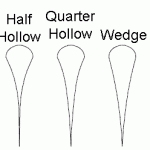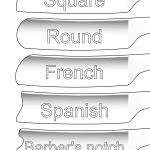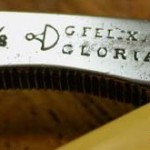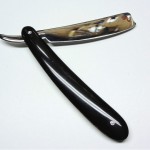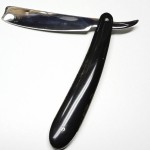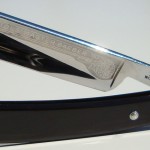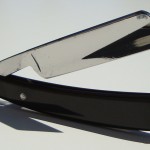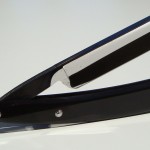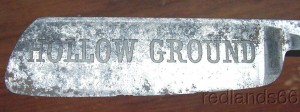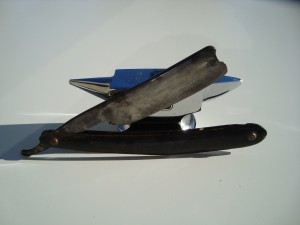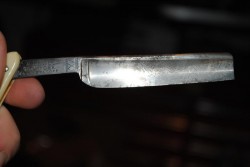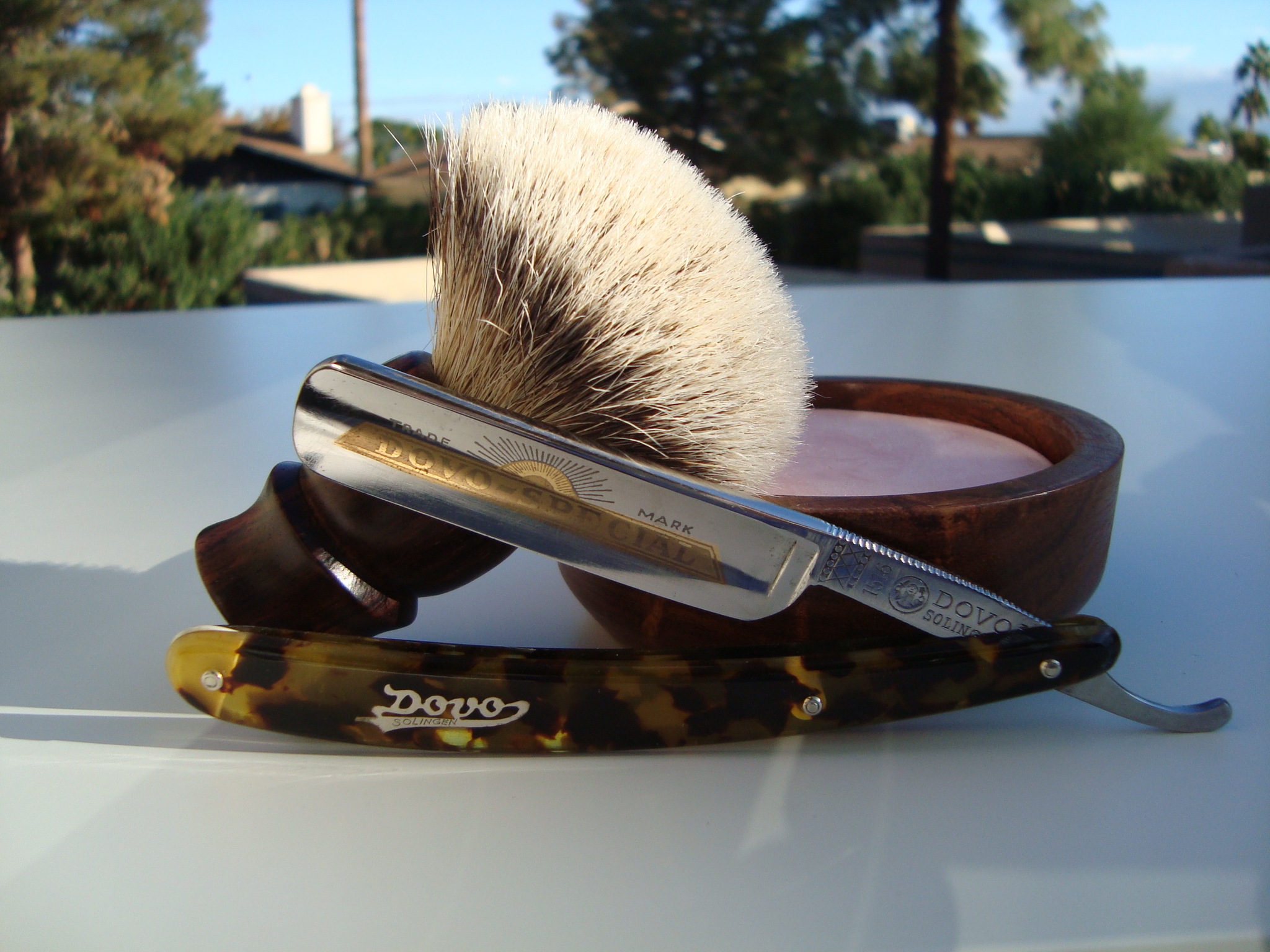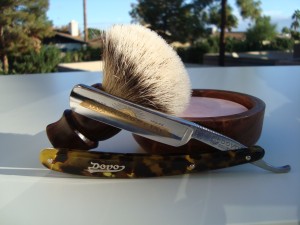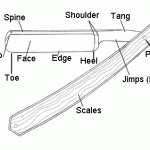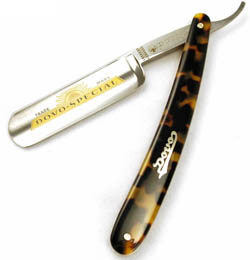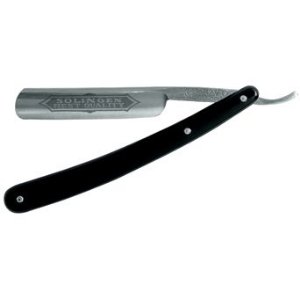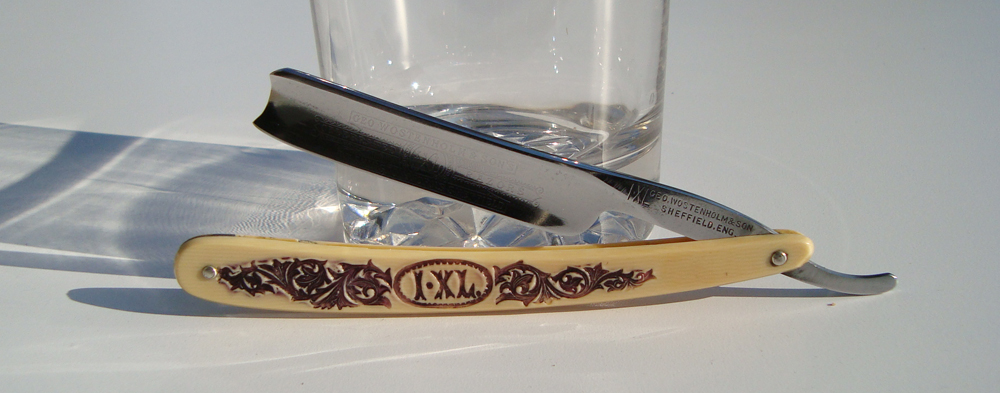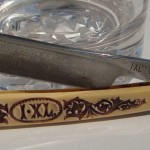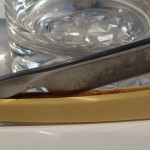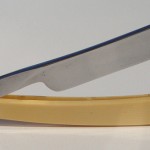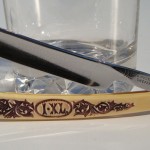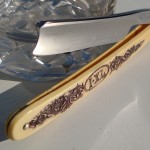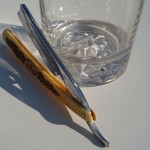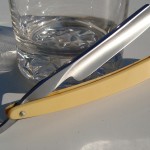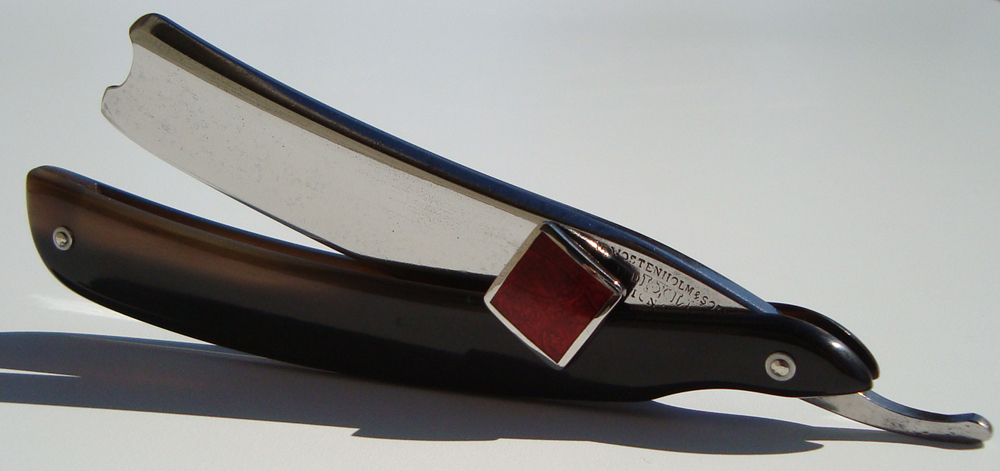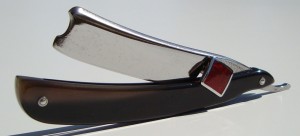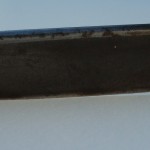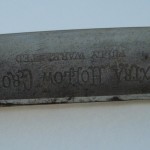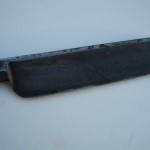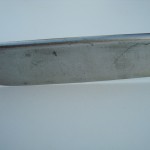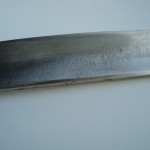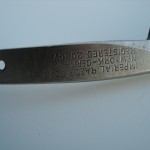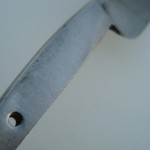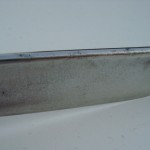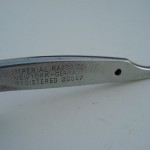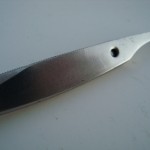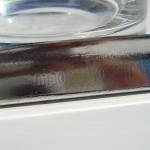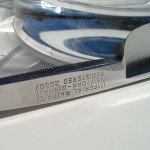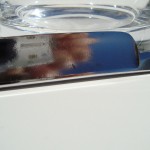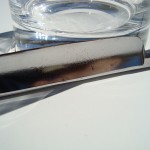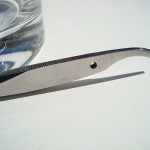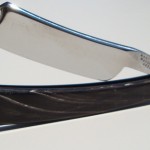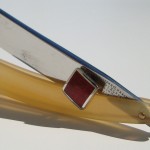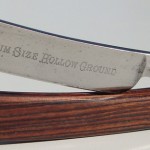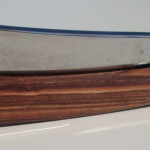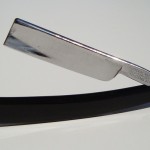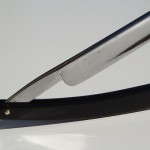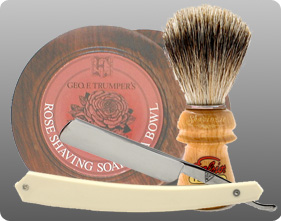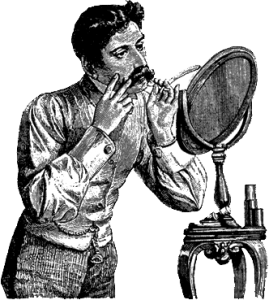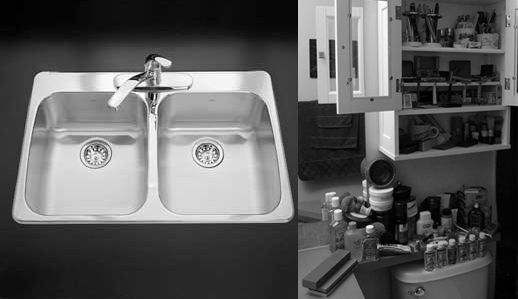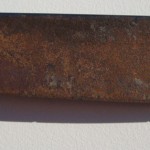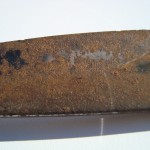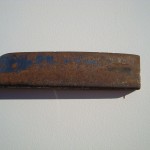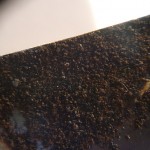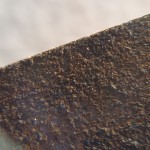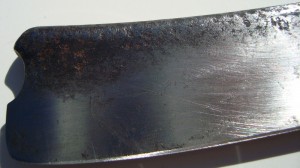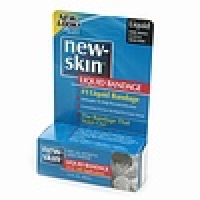I am constantly being asked this question: Which straight razor do you recommend? I’ve been meaning to write this article for a while now, but have been busy with other projects. Well, here it is; finally.
This guide is written with the beginner or non-wet-shaver looking to buy their loved one a fantastic gift in mind. Veteran straight razor users should already know what they want, but there will still be some gems of wisdom contained herein, especially the section about purchasing a vintage razor. Whether you buy a new razor or a used razor, you should stay within a certain size and shape.
Size/Shape/Grind
The beauty of straight razors is that they come in so many different combinations of size (blade width), shape, and grind thickness. The problem with buying straight razors is sorting out which one to choose. Below are pictures depicting your options.
The commonly given advice to new users is to buy a 5/8″ to 6/8″ round point in hollow grind. By staying within those parameters, you cannot go wrong. However, there is much wiggle room. New straight razors do not come in spike/square points anymore. The Spanish, notch, & round points offered these days do not have the sharp tip said razors do and are perfectly fine for a beginner. The hollow grind is likewise just a suggestion. It really doesn’t matter which grind you choose, be it 1/4 hollow or a full hollow grind. One grind will not shave any better than another. The only difference is that the thicker grind will have more mass than the thinner grind. So, if you want more momentum behind your razor, go with a thicker grind, otherwise, just choose the razor that appeals to you.
Size does matter. But not that much. As long as you stay 6/8″ or under, you will be fine. In fact, some people report that they find a 4/8″ razor much easier to learn on. A 6/8″ razor is pretty large for a beginner, but not so large as to be unwieldy. A 7/8″ razor is huge. The good news is that all starter razors don’t come in such large sizes and will conform to what is universally regarded as easy to use.
To Jimp or Not to Jimp?
Jimps are small cuts in the steel that facilitate grip. They are found on the bottom or top & bottom of the tang. See the picture below. A thumb notch is another feature. It’s designed to fit your thumb. The thumb notch may or may not come with jimps.
The answer is that you should opt for jimps if available. However, you really don’t have much control over what features your razor will or will not have. Most new “beginner” razors come with bottom jimps cut into the tang.
So Which New Straight Razor Should I Buy?
The short answer is a shave ready razor that you like the look of and can afford.
Shave Ready
Let’s break that down starting with “shave ready”. Shave ready is supposed to mean a straight razor that has been sharpened to the point of being comfortable to shave with. While most people are honest about using this term and do possess the requisite skill and equipment, there are some shady sellers out there trying to increase the value of their item by using the term “shave ready.” The takeaway is to purchase your first straight razor from a verified source. Or at the very least, make sure they have a sharpness guarantee of some sort.
When evaluating a vendor, check to see who their sharpener is, what their guarantee is, and feedback from users. Also, make sure they use the exact term “shave ready” and not some derivation thereof. When in doubt, just ask them who sharpens their razors. If they give you a vague answer or say the factory does, then go elsewhere. There are plenty of vendors who don’t upcharge you for shave readiness.
Shaving forums recommend you buy from other members of the shaving forum. Most of the time, you get a good deal, sometimes you don’t. The good thing about the forum members is that they normally know what they’re doing and what shave ready means, so you are unlikely to get a bum product. The problem with the forums is that you have to be a member and you’re buying a used product. Nothing wrong with either, but some people care.
As an alternative, you can always take a gamble and if it’s not up to your standards, send it to us for sharpening.
Aesthetics
This comes down to purely personal preference. I cannot tell you which razor looks better because my opinion is ultimately subjective. However, I can tell you that the Dovo Best features plastic scales and the fit & finish is not as good as the Bergischer Lowe. Same with the basic Thiers Issard razor found at Art of Shaving. The base model comes with plastic scales and their high end models come with natural horn or wood scales, gold wash, and a better overall finish. The old adage, “you get what you pay for” is exactly right.
If aesthetics is important to you, you probably don’t want to buy a Dovo Best and should save up your money to buy at least the Dovo Special. If you go with the cheaper model, you may just regret it for a long time. These razors are not disposable after all. You will be stuck with your choice until you can afford to replace it.
Cost
Which brings us to cost. Of course cost is important. Your first straight razor should not strain your finances. While I said above that buying a cheaper razor might not be a good idea in the long term, you don’t know yet whether you want to stick with straight razor shaving. As such, you should budget accordingly. While it is true that you may be able to sell a razor for close to what you paid for it, that isn’t always the case and will depend on who you sell it to. In reality, you’re probably just going to have to eat a good portion of the cost.
Put differently: if you are absolutely sure you will stick with straight razor shaving for life, save up and splurge. If you are not so sure or just want to try straight razor shaving, save your money and buy the cheapest functional razor possible. We offer this shave ready straight razor for less than what you will be able to find elsewhere.
Which Vintage Razor Should I Buy?
Buying a vintage razor has many advantages over buying a new razor. The most obvious is the price, followed by the quality of the manufacturing. Old razors have survived for decades or centuries because they were someone’s prized possession. This translates into good steel. While modern razors are getting better, the best razors cost a good amount of cash. Without a doubt, if you know what you are looking for, vintage razors can represent the best value for your dollar.
The problem with buying a vintage razor is that you could be buying a lemon. There’s also so many to choose from it will make your head spin.
Echoing what I have already said above, the #1 factor you need to look for is shave readiness. As such, who the seller is, is of paramount importance. Only buy from a reputable merchant or someone you trust. There are plenty of junk vintage razors out there.
If you choose to buy a restored razor, most of the pitfalls of buying vintage razors are already taken care of for you. The only choice you need to make is who to buy from. We restore our razors through a minimum of sanding in order to keep the original lines and shape of the razor. Other restorers will sand the razor to remove every single imperfection, making for a very shiny razor, but losing the original lines. See below for examples of each.
Click here to visit our gallery of work for ideas. Neither approach is wrong. You just need to choose which is right for you. Also keep in mind that the more labor that goes into a restoration, the more expensive it is. So, if you see restoration work for less than the going rate, you should make sure they don’t use a tumbler rather than a buffer or cut other corners.
This razor has been buffed and sanded a lot – the original grind lines are gone
This razor has been through our less intense restoration process
The Point
Many vintage razors come with a square point. Probably because it is easy to manufacture. Whatever the reason, the beginner is left with a pointy object that isn’t very forgiving. The very tip can be chamfered, making it much more user friendly. All other razor points do not have that issue and would be very well suited for a beginner. But don’t let the “spike” point deter you from a razor you otherwise like. It can be chamfered and it will behave similar to a round point.
What to Watch Out For
We now come to the meat of the guide. Sadly, many vintage straight razors are either too used, damaged, or rusted. The following guide will help you avoid some of the most common pitfalls.
Damage & Rust
Unless the razor has a huge chunk of steel missing, the first thing you are going to notice on a vintage razor is either the absence or presence of rust. Rust is not necessarily a deal breaker and it is usually present, but it’s not good. If the razor is completely rust free, it’s a good buy, but will cost more.
If the razor has chips, cracks, or is damaged in some way, don’t buy it, or get a professional opinion as to how much and the feasibility of dealing with the damage.
If the razor has rust present, you have to look at the edge. If the rust is pervasive along the edge, stay away. If the rust is only on the top of the razor, but not on the edge, the razor should be fine, but you want to have a professional inspect the piece to make sure the steel is still good. If you do end up wanting to purchase a razor with rust, keep in mind that rust is a signifier of pits. While we can remove the rust and minimize small pits, we cannot remove large pits without regrinding the razor. See the pictures below for some guidance.
The other thing you want to look at is the scales. Are the scales broken anywhere? Do they have bug bites? Are pieces missing? If the scales look to be in good shape, then check to see if the pivot point is still tight. That is easily fixed by tapping lightly on the pin until the scales tighten up. However, there is a small risk of damage with really old razors and some materials. Look for rust inside the pivot point. If there is a lot of rust, you may want to stay away from the razor.
Razor Near the End of Life
While their lifespan is several generations if proper care is taken care of them, straight razors do not last forever and their lifespan can be significantly shortened by misuse. If you encounter a razor that has excessive hone wear on the spine, don’t buy it. It is that much closer to being thrown away. For some more examples of excessive wear, check out our previous post on common honing mistakes.
Another indicator of end of life is a really skinny razor. Most people sharpened their razors with the spine flat against the stone. However, some people lifted the spine and hone the razor like a knife. Today, people use tape and disguise any hone wear (not intentionally). Not normally a problem, but it is something that may be a problem.
If in doubt, pass.
In Conclusion
Vintage razors are generally excellent razors, but there are lemons out there. While they represent a better value over a new razor, you run some risks unless you purchase from a trusted restorer. New razors are, well, new. They also cost more and may not shave as well as some of the great vintage razors available. However, good values can be found. We do sell both new and vintage razors.
When choosing what you want your razor to look like, it is up to you. As long as you stay under a 6/8″ blade, you cannot make a bad choice. Just be sure to have that spike point tamed so you don’t accidentally stab yourself.

